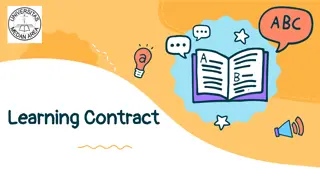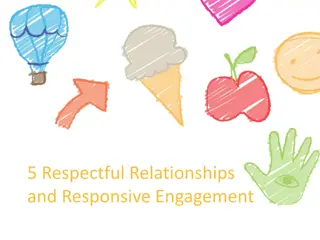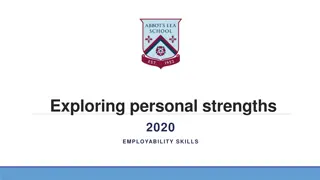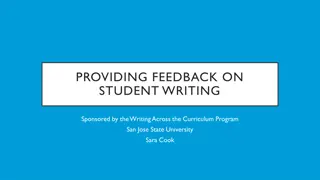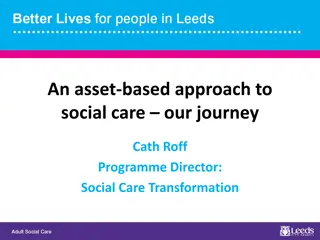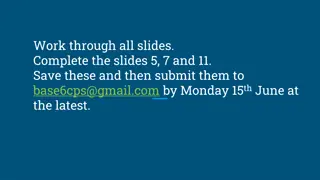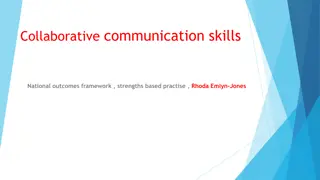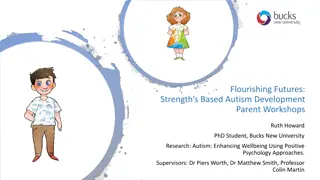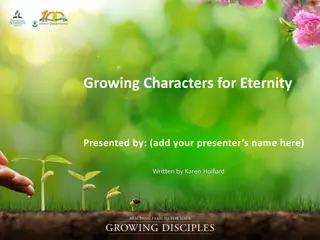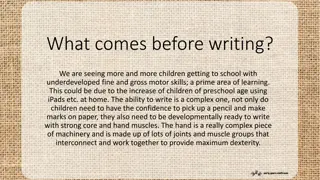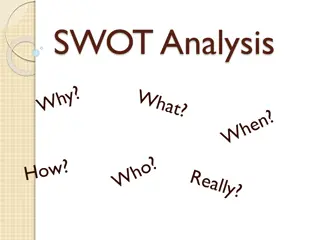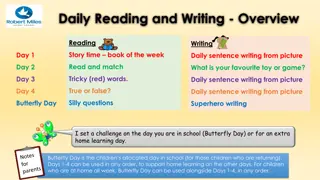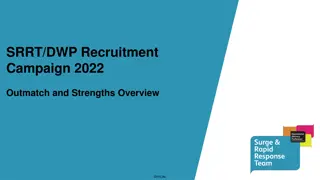Understanding Strengths-Based Writing for Children's Learning and Development
Strengths-based writing focuses on identifying and emphasizing children's strengths and abilities to support their learning and development. This approach is inclusive, helping teachers discover strategies tailored to each child's unique strengths for enhanced success in learning. Principles and research highlight the benefits and effectiveness of this method in early childhood education. Using strengths-based writing allows teachers to realistically describe children's progress, support their growth, and develop strategies to build on their abilities, ultimately fostering a positive and empowering learning environment.
Download Presentation

Please find below an Image/Link to download the presentation.
The content on the website is provided AS IS for your information and personal use only. It may not be sold, licensed, or shared on other websites without obtaining consent from the author. Download presentation by click this link. If you encounter any issues during the download, it is possible that the publisher has removed the file from their server.
E N D
Presentation Transcript
Strengths-based writing to describe children s learning and development
Success criteria Learning goal I can: understand strengths-based writing apply strategies to ensure concise writing to describe children s learning and development. Develop a deeper understanding of: purpose and principles of strengths-based writing concise writing.
Why use a strengths-based approach? A strengths-based approach is inclusive and focuses on what each child can do. Teachers use this approach to identify strategies and practices that best support children to succeed in their learning.
Principles: A strengths-based approach The underlying principles include: all children have strengths and abilities children grow and develop from their strengths and abilities when adults and children appreciate and understand each child s strengths, they are better able to learn and develop.
Research: A strengths-based approach Research and evidence has shown a strengths-based approach encourages teachers and other staff to: understand that children s learning is dynamic, complex and holistic understand that children demonstrate their learning in different ways start with what s present and write about what works for the child. Fenton, A, Walsh, K, Wong, S & Cumming, T 2015, Using strengths-based approaches in early years practice and research , International Journal of Early Childhood, vol.47, no.1, pp. 27 52, https://doi.org/10.1007/s13158-014-0115-8.
Code of ethics: Keeping it honest Being ethical involves thinking about everyday actions and decision-making, either individually or collectively, and responding with respect to all concerned. Kindergarten teachers are in a unique position of trust and influence in their relationships with children, families, colleagues and the community, therefore professional accountability is vital. Early Childhood Australia 2016, Code of Ethics , Early Childhood Australia: A voice for young children, http://www.earlychildhoodaustralia.org.au/wp-content/uploads/2019/08/ECA-COE-Brochure-web-2019.pdf.
Strengths-based writing Teachers use strengths-based writing to describe children s learning and development realistically, including: ways to support, progress and extend strengths and capacities strategies that can continue to be developed to build on abilities. Fenton, A, Walsh, K, Wong, S & Cumming, T 2015, Using strengths-based approaches in early years practice and research , International Journal of Early Childhood, vol.47, no.1, pp. 27 52, https://doi.org/10.1007/s13158-014-0115-8.
Concise and clear writing What does concise writing mean? Concise (/k n s s/) adjective: giving a lot of information clearly and in a few words brief but comprehensive.
Tips for concise writing Focus on the intent of the learning and development. Use strengths-based language. Choose each word carefully. Avoid repetition. Check your work for meaning, clarity and errors.
Concise writing Here is one process to review your writing. Critically reflect on your writing to identify: repeated information that could be condensed for clarity information is relevant and aligned to learning and development details that could be co-located and reduced to be more concise.
A teachers first attempt George loves when he has visitors in the room and takes the opportunity to tell them about his favourite activities. If we are engaging in an unfamiliar activity, with explicit support George is able to give new situations a go. George thrives in our classroom when he engages in his favourite activities such as playing in home corner or exploring our dinosaur area and reading through our dinosaur facts book. With explicit support George is beginning to explore some new activities on occasion. George is confidently able to speak about his family adventures to the zoo or about his knowledge about different dinosaur types both in one-on-one conversations or in front of the whole group during show and share. 714 characters
Identifying repeated information George loves when he has visitors in the room and takes the opportunity to tell them about his favourite activities. If we are engaging in an unfamiliar activity, with explicit support George is able to give new situations a go. George thrives in our classroom when he engages in his favourite activities such as playing in home corner or exploring our dinosaur area and reading through our dinosaur facts book. With explicit support George is beginning to explore some new activities on occasion. George is confidently able to speak about his family adventures to the zoo or about his knowledge about different dinosaur types both in one-on-one conversations or in front of the whole group during show and share.
Reducing repetition for clarity George prefers familiar exploratory play with dinosaur names, facts and books.
Identifying repeated information George loves when he has visitors in the room and takes the opportunity to tell them about his favourite activities. If we are engaging in an unfamiliar activity, with explicit support George is able to give new situations a go. George thrives in our classroom when he engages in his favourite activities such as playing in home corner or exploring our dinosaur area and reading through our dinosaur facts book. With explicit support George is beginning to explore some new activities on occasion. George is confidently able to speak about his family adventures to the zoo or about his knowledge about different dinosaur types both in one-on-one conversations or in front of the whole group during show and share.
Aligning to learning and development areas George confidently engages in extended conversations with adults, visitors to kindergarten and his peers about his visit to the zoo with his family.
Identifying repeated information George loves when he has visitors in the room and takes the opportunity to tell them about his favourite activities. If we are engaging in an unfamiliar activity, with explicit support George is able to give new situations a go. George thrives in our classroom when he engages in his favourite activities such as playing in home corner or exploring our dinosaur area and reading through our dinosaur facts book. With explicit support George is beginning to explore some new activities on occasion. George is confidently able to speak about his family adventures to the zoo or about his knowledge about different dinosaur types both in one-on-one conversations or in front of the whole group during show and share.
Reducing detail He tries new learning with explicit support and encouragement.
Concise writing: Every word counts George prefers familiar exploratory play with dinosaur names, facts and books. He tries new learning with explicit support and encouragement. George confidently engages in extended conversations with adults, visitors to kindergarten and his peers about his visit to the zoo with his family. 290 characters
Success criteria Learning goal I can: understand strengths-based writing apply strategies to ensure concise writing to describe children s learning and development. Develop a deeper understanding of: purpose and principles of strengths-based writing concise writing.
Summary Strengths-based writing: acknowledges that all children have strengths and abilities communicates children s unique learning and development respectfully and honestly is clear and concise, using strategies such as condensing repeated information, clarifying details and checking relevance to learning.
Contact QCAA Phone: +61 7 3120 6102 Email: qklg@qcaa.qld.edu.au Website: www.qcaa.qld.edu.au/kindergarten/qklg/supporting- transition-school/transition-statements




